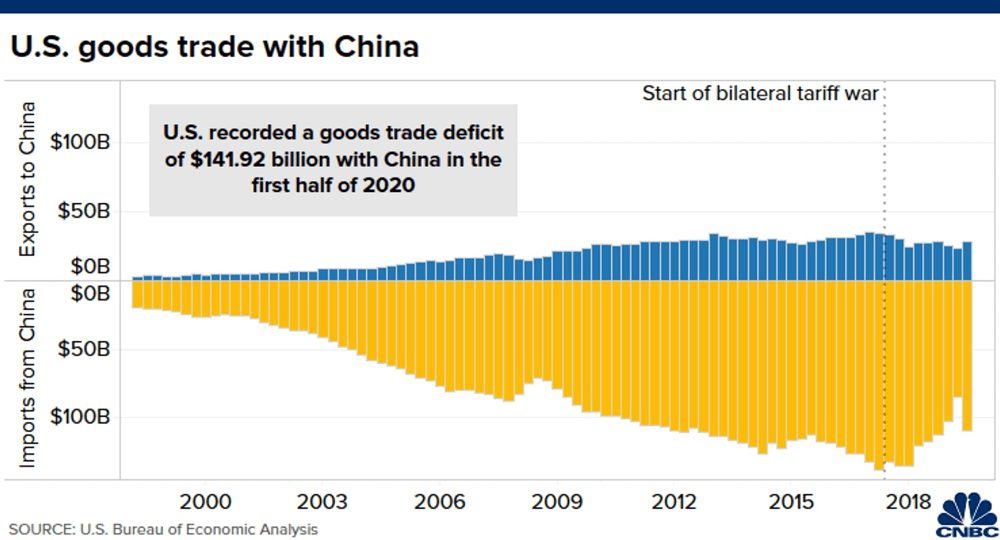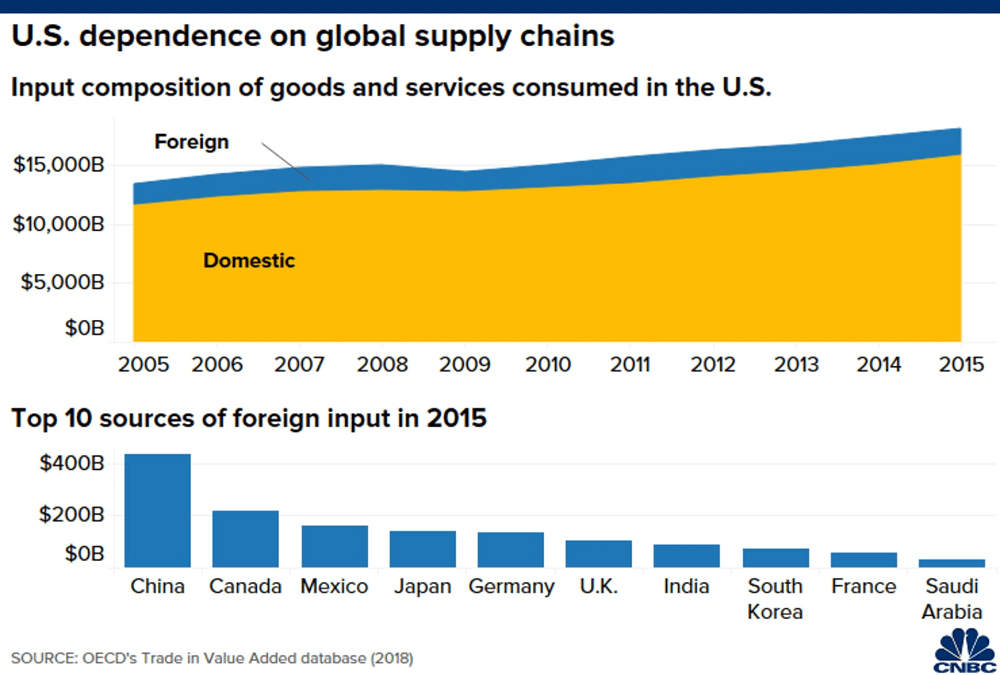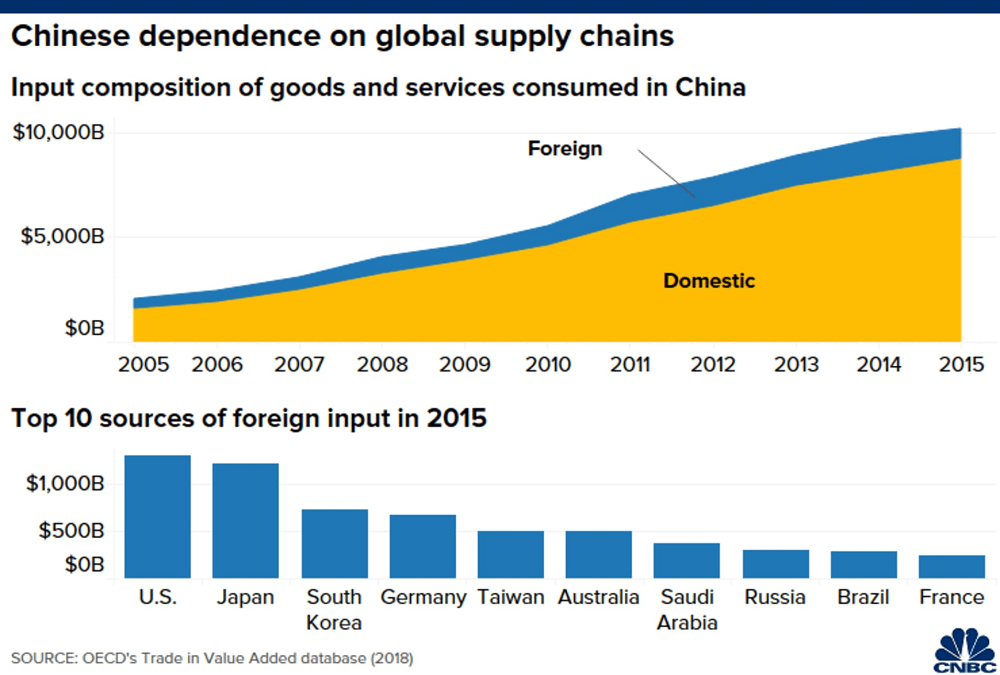5 charts show how much the U.S. and Chinese economies depend on each other
September 29, 2020 @ 11:37 +03:00
U.S. President Donald Trump has repeatedly raised the possibility of divorcing the two economies. However, various data sets suggest the process may be quite challenging — at least for now — as the two countries have grown more connected over the last decade.
U.S.-China trade
A large part of the relationship between the U.S. and China is centered on trade, with the two countries having been each other’s major trading partner for years.
Those ties suffered somewhat following a tariff fight that erupted in 2018, but bilateral trade of goods and services still totaled a substantial $636.8 billion last year, according to data by the Bureau of Economic Analysis. The trading relationship is an uneven one. In merchandize goods trade, the U.S. imports way more from China than it exports to the Asian country; but the reverse is seen in services trade, in which China buys more from the U.S. than the amount it sells, BEA data showed.
Supply chain linkages
Beyond direct trade, the U.S. and China have also become “increasingly interdependent through rising supply-chain linkages over the past decade,” Fitch Ratings said in a report last month. Supply chains are a complex network of companies that work together to provide raw materials, intermediate parts or expertise in order to produce a final product or service that can be consumed either domestically or globally.
Latest available estimates by the OECD showed that in 2015, foreign input accounted for 12.2% — or around $2.2 trillion — of total goods and services consumed in the U.S. China was the largest contributing country of that foreign input, the data showed.
In China, foreign suppliers made up around 14.2%, or $1.4 trillion, of total goods and services consumed within its borders in 2015, according to OECD data. The U.S. was also the largest single contributing country to that foreign input, the estimates showed. In contrast with U.S. reliance on Chinese input in the manufacturing sector, China is “much more” dependent on American contribution in services, said Fitch.
Investment flows
While trade and supply chain inter-dependency may be difficult to unravel, investment flows between the U.S. and China have dropped as bilateral tensions escalate. Over the last three years, the total value of foreign direct investment and venture capital deals between the countries have been falling, according to data by Rhodium Group.
A “notable trend is the drop in Chinese acquisitions of US technology assets,” the company said in its latest report this month. Meanwhile, U.S. investments in China have been relatively “more resilient,” it added. Many U.S. businesses operating in China said they’re not yet looking to move out, noted Fitch. The ratings agency cited a survey conducted last year by the American Chamber of Commerce in China, in which 83% of respondents said they’re not considering relocating manufacturing or sourcing outside China. That proportion of companies intending to remain in China has risen compared to past surveys, from 80% in 2018 and 77% in 2017, said Fitch.
5 charts show how much the U.S. and Chinese economies depend on each other, CNBC, Sep 29












